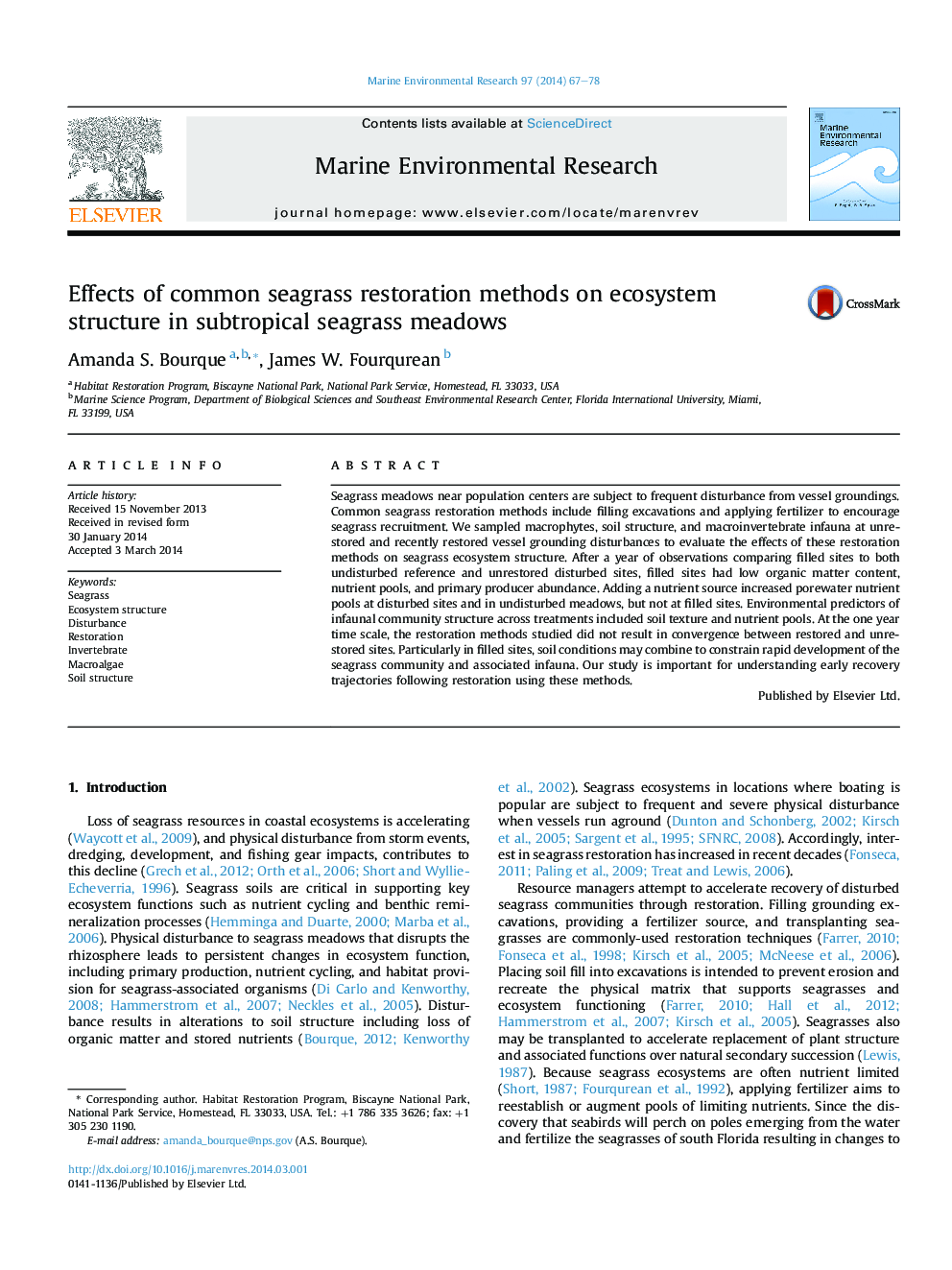| Article ID | Journal | Published Year | Pages | File Type |
|---|---|---|---|---|
| 6387846 | Marine Environmental Research | 2014 | 12 Pages |
â¢We studied restoration effects on seagrass ecosystem structure (macrophytes, soil structure, and macroinvertebrate infauna).â¢Restoration involved filling excavations with sand and fertilizing sites with bird roosting stakes.â¢Restoration methods act independently to influence seagrass ecosystem structure.â¢The restoration methods studied did not result in strong restoration effects after one year.â¢Soil properties following restoration may constrain development of seagrass and infaunal communities.
Seagrass meadows near population centers are subject to frequent disturbance from vessel groundings. Common seagrass restoration methods include filling excavations and applying fertilizer to encourage seagrass recruitment. We sampled macrophytes, soil structure, and macroinvertebrate infauna at unrestored and recently restored vessel grounding disturbances to evaluate the effects of these restoration methods on seagrass ecosystem structure. After a year of observations comparing filled sites to both undisturbed reference and unrestored disturbed sites, filled sites had low organic matter content, nutrient pools, and primary producer abundance. Adding a nutrient source increased porewater nutrient pools at disturbed sites and in undisturbed meadows, but not at filled sites. Environmental predictors of infaunal community structure across treatments included soil texture and nutrient pools. At the one year time scale, the restoration methods studied did not result in convergence between restored and unrestored sites. Particularly in filled sites, soil conditions may combine to constrain rapid development of the seagrass community and associated infauna. Our study is important for understanding early recovery trajectories following restoration using these methods.
